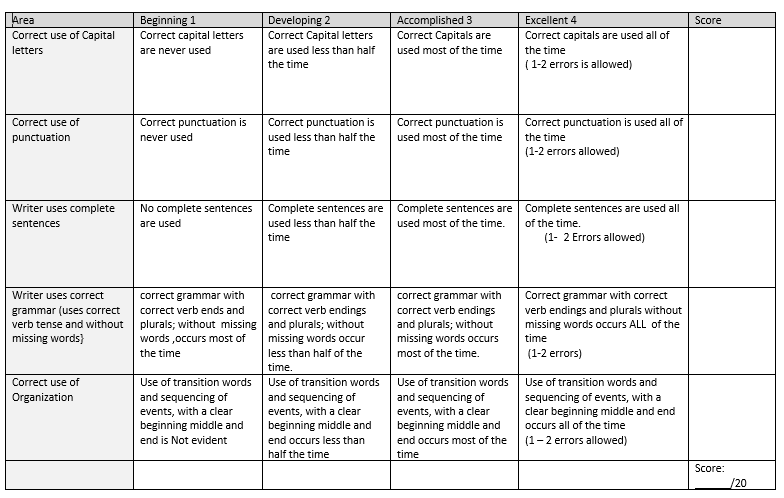
Writing
Both Deaf / Hard of Hearing students and English Language Learners typically have trouble developing writing skills. This is due to grammar, tenses, missing articles, and different word order from their native language. Practicing writing skills is an important and critical way to develop English.
Writing papers is tedious and not enjoyable to students. As such, I try to make the lesson interesting and connect to their lives as much as possible. In the past, I have had students write about their week, practicing their schedule, telling time, and the days. I have had students think of ways to better the world, thinking of ways to reduce waste, water consumption, electricity, and ways to recycle. I have even asked students to write about their future dreams and aspirations. When I worked in the classroom, I asked students to write a daily journal about anything they wanted.
In the itinerant setting, I have frequently used writing as part of listening comprehension goals. I read a grade-level story to my student and ask them to write a summary about what they read. The students have time to review their own work, gaining points for every correction made. Then it is my turn, I also get points for corrections made. It makes the writing activity more fun if it s a competition. Finally, I them use a rubric to grade the summary. The students work with me and we discuss and decide together their grade. This allows the students to reflect on their writing and understand where they need more work.
Prepositions
School ready concepts are important for Kindergarten students to know. Many of these concepts include: shapes, colors, number, the alphabet, and prepositions. In order to teach prepositions, I try to make the lessons as interactive as possible. YouTube videos that teach On, In, Under, By or In Front Of, Behind, and Between are always helpful. I also use manipulatives which allow the students to physically move the item to the location I state. I also engage students by having them act as the teacher, telling me where to put something. Sabotage is a good way to know if the student is paying attention and understanding the concepts – it also makes the teacher look “silly”.
Prepositions can be incorporated into any lesson. If the students are learning about shapes, ask them to put the square above the triangle! Or if they are working on numbers, ask what number is next on the number line. Incorporating practice and review of concepts in other lessons is something I always try to do.
Idioms and Figurative Language
Another area that Deaf / Hard of Hearing students and English Language Learners need direct instruction is with figurative language and idioms. Deaf and Hard of Hearing students have trouble learning implicitly. English Language Learners will think the phrase or saying is taken literally. This is why figurative language should be taught “face-to-face”.
There are a number of fun ways to teach idioms. Some include making a comparison chart: the literal vs. figurative meaning. Have students read stories that use idioms or figurative language – let them use the context clues to determine the meaning. Another good strategy to teach these concepts are to connect them to the students’ lives as much as possible. Create examples that include their friends and family members; allow them to come up with their own examples from past experience.
After teaching the idioms, it is always important to go back and practice / review. I have created PowerPoint games that involve reading, writing, and thinking. The words of the idiom float on screen. Students need to reorder the words to make the phrase and then give their actual meaning. Another way I have reviewed idioms is to play BINGO. Student have to match the pulled phrase to their meaning located on the BINGO board.





